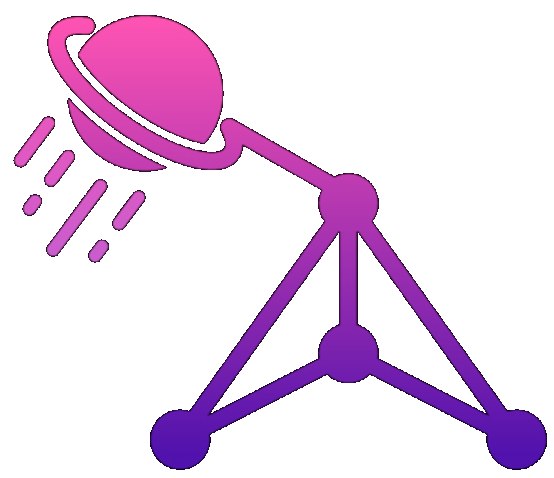"Will AI replace my job?" Wrong question. "How do I become irreplaceable by mastering AI collaboration?" That's what the winning teams ask. Here's what 200+ successful transformations taught me.
"Will AI replace my job?" It's the question I hear most often when working with teams. My answer is always the same: 'No, but someone using AI effectively might.'
The future of work isn't human versus AI—it's human plus AI. The most successful teams I work with don't see AI as a replacement threat; they see it as a capability multiplier. They've learned to collaborate with AI the same way they collaborate with talented colleagues.
After guiding 200+ teams through AI transformation, I've identified the patterns that separate thriving human-AI teams from struggling ones. Let me share what I've learned.
The Collaboration Mindset Shift
Traditional thinking treats AI as a tool—something you use to complete tasks. Collaborative thinking treats AI as a team member—something you work with to achieve goals.
This isn't semantic. It fundamentally changes how you design workflows, assign responsibilities, and measure success.
"We stopped asking 'What can AI do for us?' and started asking 'What can we accomplish together?' That shift changed everything." - Marcus Chen, Engineering Director at TechFlow
The Three Levels of Human-AI Collaboration
I've observed three distinct levels of human-AI collaboration, each with different capabilities and requirements:
AI handles routine tasks while humans focus on complex decisions. This is where most teams start—and where many get stuck.
Humans and AI work together on complex tasks, each contributing their unique strengths. This is where productivity gains accelerate.
AI doesn't just help with tasks—it expands what's possible. Teams can tackle challenges that were previously impossible or impractical.
Building Collaborative Workflows
The key to successful human-AI collaboration is designing workflows that leverage the unique strengths of both humans and AI.
Human Strengths:
- Creative problem-solving and innovation
- Emotional intelligence and relationship building
- Strategic thinking and long-term planning
- Ethical reasoning and value judgments
- Adaptability to unexpected situations
AI Strengths:
- Processing large volumes of information quickly
- Pattern recognition across complex datasets
- Consistent execution of defined processes
- 24/7 availability and scalability
- Objective analysis without emotional bias
Designing Effective Handoffs
The magic happens at the handoff points—where humans pass work to AI and vice versa. Poorly designed handoffs create bottlenecks. Well-designed handoffs create acceleration.
- Human: Defines analysis criteria and risk tolerance
- AI: Scans contract for relevant clauses and potential issues
- Human: Reviews AI findings and identifies strategic implications
- AI: Generates summary report with human insights integrated
- Human: Makes final recommendations and client communication
Result: 75% faster analysis with higher accuracy and more comprehensive insights.
The Skills Transformation
AI transformation isn't just about new tools—it's about new skills. The most successful teams develop three categories of AI-era capabilities:
1. AI Interaction Skills
- Prompt Engineering: Communicating effectively with AI systems
- Output Evaluation: Assessing AI-generated content for quality and accuracy
- Iterative Refinement: Improving AI outputs through feedback loops
2. Augmented Thinking Skills
- Pattern Synthesis: Combining AI insights with human intuition
- Scenario Planning: Using AI analysis to explore multiple futures
- Meta-Cognition: Thinking about thinking, with AI as a thinking partner
3. Collaboration Management Skills
- Workflow Design: Creating effective human-AI processes
- Quality Assurance: Maintaining standards in AI-augmented work
- Continuous Optimization: Improving human-AI collaboration over time
Real-World Transformation: Marketing Team Case Study
Let me share how one marketing team successfully transformed their operations:
-
Mapped current workflows and identified AI opportunities
-
Trained team on prompt engineering and AI tools
-
Established quality standards for AI-generated content
-
AI handles initial research and first draft generation
-
Humans focus on strategy, creativity, and refinement
-
Implemented feedback loops for continuous improvement
-
Fine-tuned human-AI handoffs based on experience
-
Developed team-specific AI prompt libraries
-
Expanded into new content types previously too resource-intensive
-
Content output increased from 12 to 45 pieces per month
-
Quality scores improved by 23% (measured by engagement metrics)
-
Team satisfaction increased—more time for creative and strategic work
-
Launched 3 new content initiatives that were previously impossible
Overcoming Transformation Challenges
Every team faces predictable challenges during AI transformation. Here's how to address the most common ones:
Some team members worry about job security or feel overwhelmed by new technology.
Teams worry that AI-assisted work won't meet their standards.
Integrating AI can initially slow down familiar processes.
Team members may lack the skills needed for effective AI collaboration.
Measuring Transformation Success
Track both quantitative and qualitative metrics to measure your team's AI transformation:
-
Productivity improvements (output per hour)
-
Quality improvements (error rates, customer satisfaction)
-
Speed improvements (time to completion)
-
Innovation metrics (new capabilities, ideas generated)
-
Job satisfaction and engagement scores
-
Confidence in using AI tools
-
Perceived value of AI collaboration
-
Willingness to expand AI usage
The Future of Human-AI Teams
As AI capabilities continue to evolve, the most successful teams will be those that master the art of human-AI collaboration. This means:
- Continuously adapting workflows as AI improves
- Developing new forms of creative and strategic thinking
- Building organizational cultures that embrace AI augmentation
- Creating competitive advantages through superior human-AI collaboration
The teams that start this transformation now will have significant advantages over those that wait. They'll develop the skills, workflows, and mindsets needed to thrive in an AI-augmented future.
